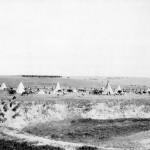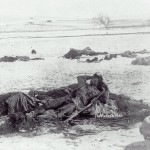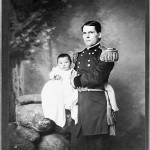Disposable Teachers
It’s the equal pay for equal work thing, stupid. Union strong and proud. (Bumper sticker on 1972 VW Rabbit, Vancouver, Canada).
Sure, that might be the mantra for the New Faculty Majority, but in a large sense, the fight to normalize the work, pay and benefits of part-time/contingent/temporary/migratory/irregular/at-will/auxiliary faculty, AKA “freeway fliers,” is one centered on dismantling the two-tiered system of inequitable pay and punitive treatment between tenure track faculty and non-tenure track faculty.
At one school where I recently taught, Green River Community College in Auburn, Washington, the battle for the minds and hearts of students is fought with almost 70 percent of the faculty hitched to the quasi-indentured servitude label, “adjunct.”
My fellow colleague, philosophy adjunct Keith Hoeller, lives a typical story of teaching 20 years at 10 colleges to cobble together a living. “The use of adjunct faculty is higher education’s way of outsourcing,” he recently said.
For this Puget Sound region, all 3.3 million of us, the April 20 teach-in – “The Solution to Faculty Apartheid” – was somewhat historic, so says several faculty involved in the break-away group of adjunct instructors organizing this event. A few of the GRAFA members – Green River Adjunct Faculty Association – have been teaching at GRCC for more than two decades each.
The two speakers both had global and localized perspectives on adjuncts – Frank Cosco with Vancouver Community College Faculty Association and Jack Longmate, Olympic College English instructor who is at the
Justice-as-Truth Legal Argument
There were many massacres of Indian peoples before the advent of photography. There is also a famous set of photographs regarding the event of December 29, 1890, known to Indians as the Massacre at Wounded Knee and to the United States government as the Battle of Wounded Knee. Some of these in conjunction with the moccasin telegraph taught a lesson not to be forgotten to the still-surviving illiterate tribes if North America: the end of times was upon them and the unity with which they identify. Some of the photographs are reproduced below. Please try to see them as they would have been seen and still are perceived by the Indian peoples, perhaps even before considering the text that accompanies them at Wikipedia, Wounded Knee Massacre.


![Woundedkneeofficers[1] Buffalo Bill, Capt. Baldwin, Gen. Nelson A. Miles, Capt. Moss, and others, on horseback, on battlefield of Wounded Knee.](http://dissidentvoice.org/wp-content/uploads/2012/04/Woundedkneeofficers1-150x150.jpg)
![Hotchkiss_gun_wounded_knee[1] Soldiers pose with three of the four Hotchkiss Guns used against the Lakota at Wounded Knee. Photo by Grabill, Deadwood, South Dakota. The cannon are Hotchkiss Mountain Guns of 1.65 in. They are sometimes referred to as Mountain Rifles.](http://dissidentvoice.org/wp-content/uploads/2012/04/Hotchkiss_gun_wounded_knee1-150x150.gif)
![Woundedknee1891[1] Burial of the dead after the massacre of Wounded Knee. U.S. Soldiers putting Indians in common grave; some corpses are frozen in different positions.](http://dissidentvoice.org/wp-content/uploads/2012/04/Woundedknee18911-150x150.jpg)
![Big_Foot[1] Spotted Elk a.k.a. Heȟáka Glešká [Lakota] or Hoh-pong-ge-le-skah [Cheyenne] who later became known as 'Big Foot' or 'Si Tȟaŋka' in a 1872 portrait taken while part of a Dakota delegation visiting Washington D.C. US National Archives and Records Administration Photo Citation # 111-SC-87772.](http://dissidentvoice.org/wp-content/uploads/2012/04/Big_Foot1-150x150.jpg)
![DeadBigfoot[1] Miniconjou chief Bigfoot lies dead in the snow after massacre at Wounded Knee.](http://dissidentvoice.org/wp-content/uploads/2012/04/DeadBigfoot1-150x150.jpg)
![Grabill_-_Survivors_of_Big_Foots_band[1].jpg.opt660x514o0,0s660x514 Survivors of Wounded Knee Massacre. Title: What's left of Big Foot's band. 1891.](http://dissidentvoice.org/wp-content/uploads/2012/04/Grabill_-_Survivors_of_Big_Foots_band1.jpg.opt660x514o00s660x514-150x150.jpg)


 PART 2. Written Argument
PART 2. Written Argument
(1). The Declaration of Independence settled that one People has no right to possess another’s homeland or to dictate how the other shall govern itself, and the Constitution of the United States of America gave certain Peoples direct access to the Supreme Court of the United States to enforce that STRUCTURALLY-CRITICAL fundamental principle.
(2). Specifically, the Commerce Clause enacts Congress can regulate trade with “foreign Nations and Indian Tribes”, those being the two explicitly-identified categories of other sovereign Peoples organized as States for
Sure, that might be the mantra for the New Faculty Majority, but in a large sense, the fight to normalize the work, pay and benefits of part-time/contingent/temporary/migratory/irregular/at-will/auxiliary faculty, AKA “freeway fliers,” is one centered on dismantling the two-tiered system of inequitable pay and punitive treatment between tenure track faculty and non-tenure track faculty.
At one school where I recently taught, Green River Community College in Auburn, Washington, the battle for the minds and hearts of students is fought with almost 70 percent of the faculty hitched to the quasi-indentured servitude label, “adjunct.”
My fellow colleague, philosophy adjunct Keith Hoeller, lives a typical story of teaching 20 years at 10 colleges to cobble together a living. “The use of adjunct faculty is higher education’s way of outsourcing,” he recently said.
For this Puget Sound region, all 3.3 million of us, the April 20 teach-in – “The Solution to Faculty Apartheid” – was somewhat historic, so says several faculty involved in the break-away group of adjunct instructors organizing this event. A few of the GRAFA members – Green River Adjunct Faculty Association – have been teaching at GRCC for more than two decades each.
The two speakers both had global and localized perspectives on adjuncts – Frank Cosco with Vancouver Community College Faculty Association and Jack Longmate, Olympic College English instructor who is at the
Justice-as-Truth Legal Argument
Justice as fairness is intended as a political conception of justice. While a political conception of justice is, of course, a moral conception, it is a moral conception worked out for a specific kind of subject, namely, for political,PART 1. Pictorial Argument
social, and economic institutions.
– John Rawls (1921-2002)
There were many massacres of Indian peoples before the advent of photography. There is also a famous set of photographs regarding the event of December 29, 1890, known to Indians as the Massacre at Wounded Knee and to the United States government as the Battle of Wounded Knee. Some of these in conjunction with the moccasin telegraph taught a lesson not to be forgotten to the still-surviving illiterate tribes if North America: the end of times was upon them and the unity with which they identify. Some of the photographs are reproduced below. Please try to see them as they would have been seen and still are perceived by the Indian peoples, perhaps even before considering the text that accompanies them at Wikipedia, Wounded Knee Massacre.

![Woundedkneeofficers[1] Buffalo Bill, Capt. Baldwin, Gen. Nelson A. Miles, Capt. Moss, and others, on horseback, on battlefield of Wounded Knee.](http://dissidentvoice.org/wp-content/uploads/2012/04/Woundedkneeofficers1-150x150.jpg)
![Hotchkiss_gun_wounded_knee[1] Soldiers pose with three of the four Hotchkiss Guns used against the Lakota at Wounded Knee. Photo by Grabill, Deadwood, South Dakota. The cannon are Hotchkiss Mountain Guns of 1.65 in. They are sometimes referred to as Mountain Rifles.](http://dissidentvoice.org/wp-content/uploads/2012/04/Hotchkiss_gun_wounded_knee1-150x150.gif)
![Woundedknee1891[1] Burial of the dead after the massacre of Wounded Knee. U.S. Soldiers putting Indians in common grave; some corpses are frozen in different positions.](http://dissidentvoice.org/wp-content/uploads/2012/04/Woundedknee18911-150x150.jpg)
![Big_Foot[1] Spotted Elk a.k.a. Heȟáka Glešká [Lakota] or Hoh-pong-ge-le-skah [Cheyenne] who later became known as 'Big Foot' or 'Si Tȟaŋka' in a 1872 portrait taken while part of a Dakota delegation visiting Washington D.C. US National Archives and Records Administration Photo Citation # 111-SC-87772.](http://dissidentvoice.org/wp-content/uploads/2012/04/Big_Foot1-150x150.jpg)
![DeadBigfoot[1] Miniconjou chief Bigfoot lies dead in the snow after massacre at Wounded Knee.](http://dissidentvoice.org/wp-content/uploads/2012/04/DeadBigfoot1-150x150.jpg)
![Grabill_-_Survivors_of_Big_Foots_band[1].jpg.opt660x514o0,0s660x514 Survivors of Wounded Knee Massacre. Title: What's left of Big Foot's band. 1891.](http://dissidentvoice.org/wp-content/uploads/2012/04/Grabill_-_Survivors_of_Big_Foots_band1.jpg.opt660x514o00s660x514-150x150.jpg)


 PART 2. Written Argument
PART 2. Written Argument(1). The Declaration of Independence settled that one People has no right to possess another’s homeland or to dictate how the other shall govern itself, and the Constitution of the United States of America gave certain Peoples direct access to the Supreme Court of the United States to enforce that STRUCTURALLY-CRITICAL fundamental principle.
(2). Specifically, the Commerce Clause enacts Congress can regulate trade with “foreign Nations and Indian Tribes”, those being the two explicitly-identified categories of other sovereign Peoples organized as States for
